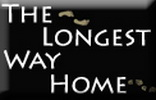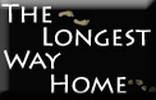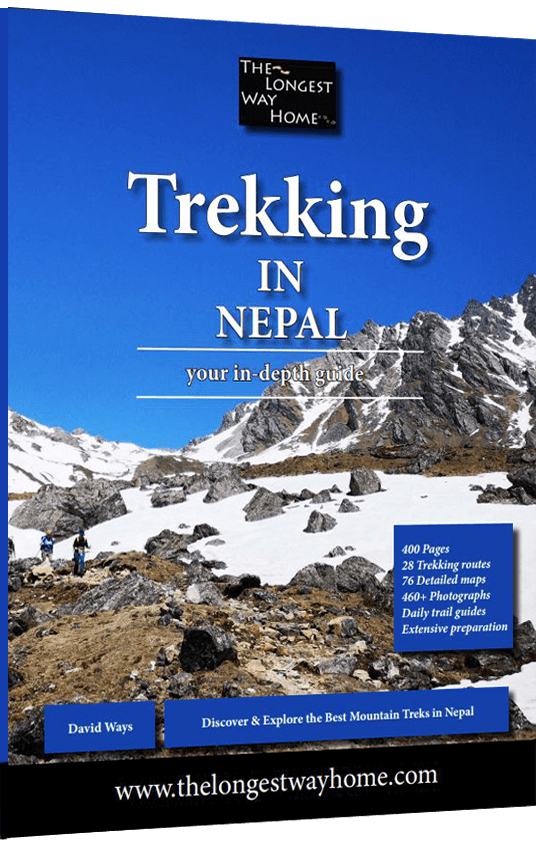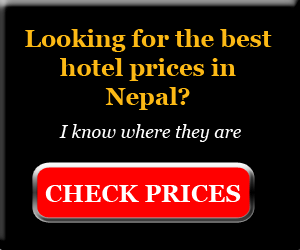What equipment do you need to go trekking in Nepal?
I've gone on many treks in Nepal for many years at different times of the year. What you need to take with you is ultimately up to the weather!

The biggest mistake I've seen people make is: They take too much and buy far too much climbing equipment!
The truth of the matter is most of what you will need is available in Nepal. Either in Kathmandu or Pokhara - and it's cheap.
Read on to find out what gear you really do and don't need when trekking in Nepal!
Trekking Equipment Categories
» The basics of trek equipment vs summit equipment?
» A full Nepal trekking gear list
» What you don't need to pack!
» What's the ideal weight of your bag when trekking?
The difference between summiting and trekking
Let's simplify this into definitions:
Trekking: "to journey on foot, especially to hike through mountainous areas"
Summiting: "the highest point or part, as of a hill," - ref: climbing
There is a vast difference between trekking to Mount Everest Base Camp and summiting or climbing Mount Everest.

Examples of the difference:
Trekking to Mount Everest Base Camp is a 10-12 day trek with a maximum altitude of 5,364 metres (17,598 ft).
Summiting Mount Everest takes 10 - 12 weeks most of which is acclimatization. More time again is needed for training in steep faces, rough rocks, night climbs, ice falls and snow climbs. You will also need to pay a $10,000 permit fee. The climb duration itself is defined largely by weather taking around 5-6 days from Everest Base Camp to a top altitude of 8,848 metres (29,029 ft).
Average cost of Everest Base Camp trek: $1300 (low-budget)
Average cost of Climbing Mount Everest $70,000.- $120,000
Trekking is different to summiting or climbing and so is the equipment needed
There are many treks in Nepal and just as many if not more summits to climb. The majority of people go trekking. And it's a fantastic experience that has its own challenges.
The biggest challenge I've seen many people do is simply taking a trek far too seriously. I've seen groups arrive for the Annapurna Circuit decked out with camping gear, summit body suits, and crampons in the middle of October. None of which is needed.

A lot of these people have booked "Professional trekking tours" overseas. And the cost of the equipment is added along with more porters and guides to carry it. Such things make it all the more exciting and is often referenced with "Be prepared for all extremes" in their advertising.
The truth is you'll end up using none of that equipment on any average trek during peak season, including the Annapurna Circuit, Annapurna base camp, Gokyo and Everest Base Camp.
If you are planning on going camping, things will change. Likewise if you plan to summit or climb to the peak of any mountain along your trek. Generally speaking, camping in Nepal is far more expensive than teahouse trekking. Largely because the guide needs camping equipment too, and porters are needed to carry things. That, and food needs to be carried. I've met many experienced trekkers who have said "I can carry my own camping gear ...." only to struggle with Nepali terrain and then spend more getting a porter in a hurry. Plan ahead, and be realistic!
Generally speaking the equipment you need for the majority of treks in Nepal is surprisingly little.
Full equipment / gear list for trekking in Nepal
This list is based on a peak season (Sept-Oct) trek on the Annapurna Circuit (18 days) with no porter.

- Lightweight hiking boots - make sure you break them in long before arriving in Nepal!
- Lightweight rubber shoes/sandals (closed foot are best, similar to crocs)- for showers, night time toilet walks.
- Hiking socks - 3 thick pairs 2 thin pairs. Buy quality hiking socks suitable for the climate you'll be in.
- Lightweight long sleeve trekking shirts (3). Long sleeves are good for sun protection. Light weight makes for easy wash material.
- Long sleeve cotton t-shirt - (1). Good for sleeping in at night or as a base layer if it gets cold in the mornings/evenings.
- Long leg light weight combat trekking pants, zip off are good. (1-2). A lot of these pants are windproof. Avoid anything too heavy or completely water proof. Zip offs are good as they can double up as shorts during the day.
- Windproof jacket/windbreaker (1): you'll mainly use this only in the morning or when sitting around at night. But making sure it's windproof is good in case the wind picks up during the day.
- Lightweight rain jacket: Small enough to pack up in a tiny pocket. Good for unexpected rain showers. Light weather protection and warmer weather.
- Underwear - 4-5. Comfortable underwear is essential. Pack both cotton and polyester in case of problems (Friction).
- Woolen, wide rim or peaked hat (1) Depending on the weather take a hat for both sun and wind protection.
- Sunglasses (2) make sure you buy genuine UV protection sunglasses. The suns rays are particularly strong the higher up you go. Use a hard case to keep them in to avoid easy breakages or else carry a spare pair.
- Gloves (1) windproof gloves during this season are all that's needed.
- Quick dry towel (1) Try a medium size rather than bath sized. Dry it as below.
- Bungy cords - essential for hanging up your clothes to dry, or wrapping them around your day pack which is great way to dry clothes during the day.

There's no need for professional carabiners, but packing a few light weight ones will help tie a few things for you - A few Carabiners (climbing clips) to help close things, and bind things together like your washing line.
- One packet of washing powder for clothes
- Water purification tablets or drops (see Steripen later)
- Washing items: soap, small face cloth, toothbrush, toothpaste, tea tree oil and a small water proof toiletry bag or dry bag to carry them in.
- Sunscreen with factor 50 being a good choice.
- Water bottles (1-2) use one for drinking, and the other for water preparation or backup.
- Dry bag (1) essential of keeping your valuables in or for doing quick clothes washes in
- Duct tape (1 small), just in case.
- Chapstick for dry lips due to climate and heavy breathing
- First Aid Kit containing paracetamol, bites/burn cream, plasters, small bandage, antiseptic cream.
- Small head torch with batteries.
- Wallet to carry your money (bring a lot of small change!)
- Some ordinary plastic bags to keep things in, e.g. dirty laundry
- Baby wipes
- Tissue paper though a handy pack will do for emergency toilet breaks
- Small trekking map
- Watch
- Padlock to lock your trekking lodge or teahouse door when you are not there
- Day Pack (1) used to pack all the above into. Make sure it's strong with lots of pockets and one or two small preventative locks. A 35-40 liter bag is usually large enough
Optional extras:
- Camera/Video, batteries, charger and memory cards. If using AA batteries, try to get a fast 15 minute charger. Don't forget a socket adapter for your plugs!

Recommended! A water container (check the top does not leak!) - Light weight tripod. I'd advise this only for the dedicated photographer. You won't really need much height for a tripod here, but for capturing low light still scenes or sunrises/sunsets it's a good addition, but not essential unless you have a porter.
- Lightweight padlock for your bedroom door
- Plug for sink
- Swiss Army type knife
- Trekking bars/candy/cheese - good for the munchies
- Mints/Chewing gum - good for dry conditions
- Roll on antiperspirant (light bottle). Good for friction burns too
- Sleeping bag, at this time of year (peak) you won't need a heavy one, but keep in mind blankets become scarce during peak season
- Super lightweight multi socket in case you have a lot of items to charge
- Solar chargers can be helpful but only if you buy high quality ones (not in Nepal) and you want to keep your phone charged.
- Trekking poles - handy for rough terrain
- Note pad, pencil/pen
- Mobile phone's work when trekking just don't expect 4G or even 3G. Wifi in some areas is non-existent. If using your phone as a camera then you'll need to bring a charger and or a batter backup as charging a mobile can cost you anywhere between 100 rupees to 1000 depending on the trek.
Do see my guidebook to Nepal and my First Time Trekking in Nepal book for comprehensive packing and equipment lists including where to buy your gear, what to avoid buying in Nepal and what your should bring from home.
What you don't need to pack!
- I've seen some strange things in Nepal over the years. But some of the things trekkers bring with them that seem completely unnecessary are:

There's no need to carry a solar shower on a trek. All accommodation will have some form of shower for you. If you are camping, then yes, it can be useful. - Hair dryer - seriously? If you are taking helicopter rides to resorts in the Himalayas fine, otherwise forget it.
- Shaving foam - As above. How often do you get to go a few weeks without shaving?
- Makeup - perfume - aftershave - Trekking for several weeks is not for smelling nice. If you must, bring something very small, and don't use a lot.
- Laptops - iPads - I've seen these gadgets start to appear in peak season treks. Personally I wouldn't take one unless I was doing actual research work. If you are just going trekking, take notes on paper. Remember the effect altitude has on electronics!
- Gas stove, pots, pans etc. Why? You'll need to buy the food to cook with from the same places that are selling cooked foods from in the first place. On a regular trek, forget it. The exception if if you are going to remoter areas for camping.
- Solar showers again why? Yes, it's nice. Yes, you'll save about $2 dollars on a shower. But you'll still need to carry it all and fetch the water. Shower locally.
- Camping mattresses are not needed unless you are going camping or have issues with thin mattresses in Nepali tea houses. A typical Nepali tea house does not have the most luxurious mattress however a camping mattress on top of it won't make that much of difference.
- Loudspeakers: No, just do not bring them. Use headphones. Not only are headphones likely to annoy fellow trekkers enjoying the sounds of nature, but you'll also upset local wildlife. It's a big no,no to play music while trekking.
- Guitar or musical instrument: Again, you'll likely annoy other trekkers who don't want to be disturbed, want to listen to nature, may be unwell etc. Certainly don't play while trekking for all the same reasons listed for loudspeakers.
Just remember when you are packing that you'll also need to carry all these things, pack and unpack everyday. On a regular trek you're meant to be enjoying yourself, not struggling to squeeze everything into a bag that's ripping apart due to excess weight!
The forgotten essentials
Here are a few things you might consider from the lists above for both peak and off peak trekking:
- Clothes: at the peak trekking time of year you really don't need thick heavy clothes. As always, trekking in layers is better.
- Sunscreen: It's listed as an-essential as the sun can be very strong in the mountains. Some high UV sun block is very important.
- Map: The trails are all mapped out well. But carrying a map is always a good idea and fun in the evenings to know where you came from or where you are going..
- Water purification: You need to plan to either buy water en-route which can be costly, or purify your own water from iodine or another method like a Steripen. However, with a Steripen don't forget to bring enough batteries!
- Antiseptic cream: a small tube is essential in case of a cuts, or really bad stinky feet!
- Head torch: Forget handhelds, if you come into your accommodation in the dark they might not have electricity. A head torch will save you time in moving around and getting things done!
- Silk sleeping bag liner. It's small, light and can add to your comfort levels if you don't like the unwashed blankets in your accommodation.
- Thermal underwear during cold treks can be useful in the mornings, or for sleeping in at night. If you forgot some, jogging pants are widely available in all towns for less cost.
Should you take a Steripen or Solar Charger?
A Steripen uses UV light to kill bacteria in water. It takes about a minute to sterilize the water. It's safe and works. It's also better for you and the environment than using chemicals or buying bottled water en route. However, a Steripen uses a lot of battery power (usually AA batteries). In the cold weather these batteries don't last long either. You might be lucky to get 10 liters out of 4 batteries. Something to consider as you will be consuming a lot of water. Moreover, batteries in Nepal are not that good. You could of course bring a rechargeable batteries plus the charger but you'll have to pay for the charging so make sure it's a fast charger. It's still important to bring water purification tablets just in case the Steripen breaks or the batteries run out.
A solar charger uses the suns light to charge up a device during the day. The good news is that the sun is strong and bright during the peak trekking seasons of Nepal. The bad news is that the weather changes, you may be trekking in the shade and these solar panels are not very robust. They are not so great for your expensive phones battery either so use a battery backup pack. Again, think of the extra weight you have to carry. If you are just charging your phone, then maybe paying at the teahouse to charge every few days is a better solution. Remember to place your phone in airplane mode to save battery if you are in a place with weak or no reception.
Ideal weight of a bag when trekking
As a general rule most people are comfortable with the following
- Short treks 7kg
- Short to medium treks 10kg
- Long term treks 15kg
The above is relative depending on exact needs, treks, and climate.
Most people manage treks up to 12 days with a 35 - 40 liter bag.
Lukla (Everest treks) allow up to 15kg for checked in bags and 7kg for carry on. However, this is subject to the change and the airline. If your bag weighs 10kg then just take out a camera or your valuables and check it in for the short flight. Again, most people leave their luggage at their hotel before their trek.
Should you take a porter to carry your gear?
If you have never trekked before or if you are taking a lot of equipment such as cameras then you might take a porter to help with your load.
Likewise if you are a small group and if some members don't want to carry anything at all a porter can be very useful.
Useful information on hiring a porter in Nepal:
If you have a guide, they will help you hire a porter.
Porters are cheaper than a guide, and should not be used as a guide.
There are regulations on how much a porter is allowed to carry (20kg).
Most porters do not speak English, be sure to have a translator explain what you both are expecting. Including who will pay for your porters food and accommodation. If flights are involved, it's your responsibility to pay for a porters return ticket.
All porters must now be registered. If registered it means they are insured. If not, then the trekker will be liable for them.
There's a lot more information on my article on hiring a guide in Nepal
More details on trekking equipment
If you are looking for more detailed information on gear and equipment for trekking in Nepal. Including what is currently available in Kathmandu and Pokhara then I recommend you get the Trekking in Nepal guidebook.
There's detailed dedicated chapters with photographs and prices on what you need, what's available in Nepal and where to buy it. Including packing lists with printout lists you can tick off.
For the entire country of Nepal, including trekking, then this Nepal Guidebook covers all!
More articles on trekking in Nepal
| You might find my following free guides helpful: | ||||
|---|---|---|---|---|
 |
My guide on trekking in Nepal |
 |
Check out my guide on equipment & gear needed for trekking in Nepal | |
 |
Check out my list of treks to do in Nepal complete with maps |  |
Check out my guide on how to travel overland into Tibet for a lot more! | |
 |
How to choose a trekking guide in Nepal |  |
My Day by day account of trekking to Everest Base Camp in the off season (winter) | |
 |
Check out my How to travel overland into Nepal guide |  |
Check out my country Guide to Nepal | |
Liked this page? You'll love my trekking book (which includes this trek)! It's a hands-on, fully comprehensive trekking guidebook that's better than the rest. Yes, really!
In the book, I cover over 29+ treks in Nepal with step-by-step accuracy using scalable maps, photographs and travel-tested up-to-date trekking information.
Just like my other guidebooks to Nepal you can download it instantly now or order a paperback copy. An up-to-date guidebook like no other.
Was this page helpful to you? If so please tell others!











